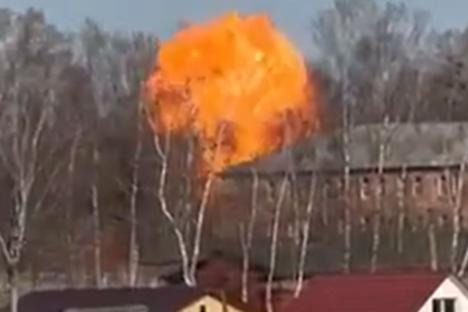Warmer daytime temperatures mean Okanagan officials have their eye on the melting snowpack, watching for hints of flooding.
“At this time of year, we’re always on standby, monitoring our own systems and working with provincial departments and Environment Canada to monitor all of the factors that lead to overwhelming freshet flows and to inform planning activities,” City of Kelowna Utility Planning Manager Rod MacLean said.
“In recent years we are seeing nature become more and more unpredictable.”;
The current reading at the Mission Creek snow weather station at 1,780 metres, east of Kelowna, shows the current snowpack conditions are falling short of last year's readings at this time, but are higher than the average of the last 75 years.
Read more: ‘Just a waste': B.C. woman questions why ICBC issues $1 rebate cheque
At the Oyama Lake snow weather station, on the east side of Kalamalka Lake between Vernon and Kelowna at 1,360 m elevation, the snowpack has lost more than 5 cm of its 65 cm depth in the last three days alone.
The measurement of snow at the Brenda Mine station, west of Peachland near Highway 97C at 1,460 m elevation, shows the snowpack is measuring above both last year's data and the historical median.
In 2020, Kelowna neighbourhoods saw localized flooding, but much less significant than in 2017 and 2019, when rivers and lakes in the region burst their banks, causing millions of dollars in damage.
Higher snowpack levels combined with warm temperatures have city officials considering the potential for some flooding to occur into July of 2021.
Read more: Okanagan weather: warming up to finish March
“As we have experienced in the past, the weather is unpredictable and with just the right mix, localized flooding is always a possibility and property owners should be prepared,” a release from the city said.
To help monitoring the ever-changing levels of two local waterways, the City of Kelowna has installed new data collection monitors on Mill and Mission creeks.
The monitors are said to also alert officials to debris blocking the waterways.
The B.C. River Forecast Centre said La Niña conditions, which began in 2020 in the province, often result in continued snow accumulation and delayed snowmelt.
Between March 1 and May 1, snowpacks around “areas in the Southern Interior tend to increase by 10 to 17 percentage points on average,” it stated. “Recent La Niña years have resulted in significant flooding, including 2017, 2012 and 2011.”
Read more: UBC Okanagan professor suggests new approach to ‘limit disparities’ in forest-water research
The combination of a high, March 1 snowpack, La Niña conditions that will persist through spring, and seasonal weather forecasts that predict cooler and wetter conditions for the province mean an elevated risk for freshet-related flooding, according to the River Forecast Centre.
Freshet is the flood of a river from heavy rain or melted snow.
The city reminds residents that they are responsible for protecting their own properties from flooding, with sandbags available at the Kelowna Fire Hall on Enterprise Way and sand available for purchase at most local nurseries and gravel pits.
“If sand and sandbags are required for residents in the City of Kelowna, an announcement will be made, and the locations will be posted on kelowna.ca.”
The River Forecast Centre will update the flood threat situation in B.C. again on April 9.




